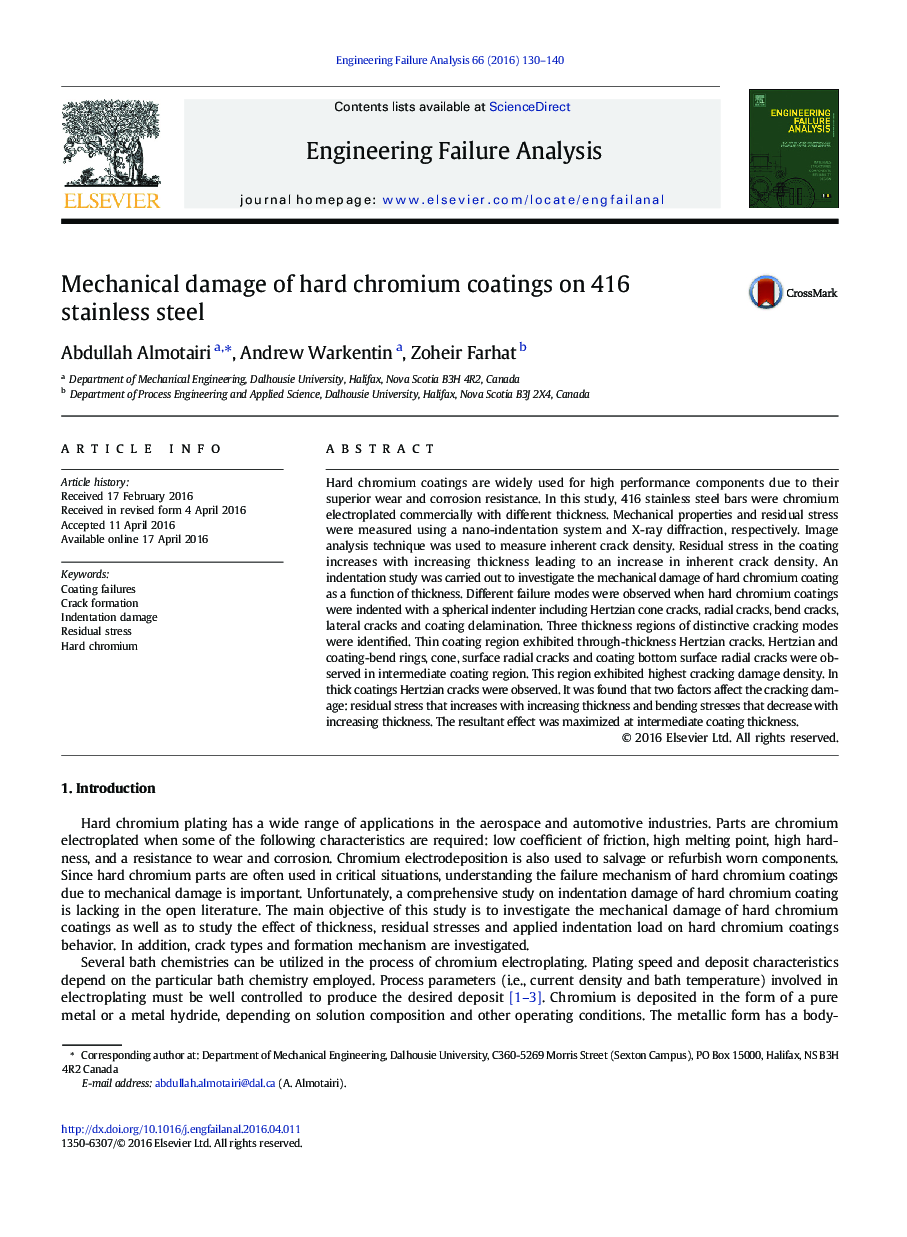| Article ID | Journal | Published Year | Pages | File Type |
|---|---|---|---|---|
| 763254 | Engineering Failure Analysis | 2016 | 11 Pages |
•Residual stresses in electroplated chrome coatings rise with increasing thickness.•Inherent crack density increases with coating thickness.•Cone, ring, and radial cracks form during indentation damage.•The amount of mechanical damage during indentation is a function of thickness.
Hard chromium coatings are widely used for high performance components due to their superior wear and corrosion resistance. In this study, 416 stainless steel bars were chromium electroplated commercially with different thickness. Mechanical properties and residual stress were measured using a nano-indentation system and X-ray diffraction, respectively. Image analysis technique was used to measure inherent crack density. Residual stress in the coating increases with increasing thickness leading to an increase in inherent crack density. An indentation study was carried out to investigate the mechanical damage of hard chromium coating as a function of thickness. Different failure modes were observed when hard chromium coatings were indented with a spherical indenter including Hertzian cone cracks, radial cracks, bend cracks, lateral cracks and coating delamination. Three thickness regions of distinctive cracking modes were identified. Thin coating region exhibited through-thickness Hertzian cracks. Hertzian and coating-bend rings, cone, surface radial cracks and coating bottom surface radial cracks were observed in intermediate coating region. This region exhibited highest cracking damage density. In thick coatings Hertzian cracks were observed. It was found that two factors affect the cracking damage: residual stress that increases with increasing thickness and bending stresses that decrease with increasing thickness. The resultant effect was maximized at intermediate coating thickness.
